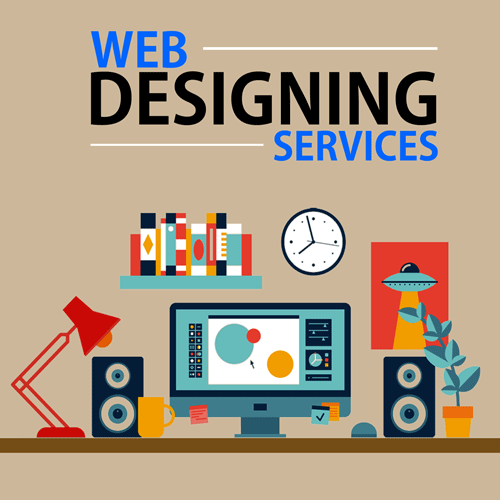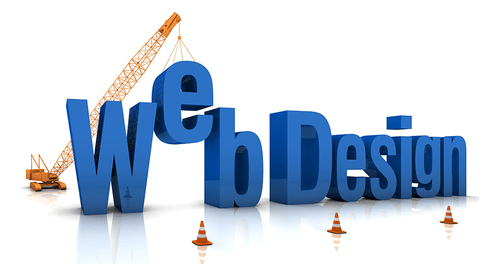6 easy steps to evaluate your website design
Website design isn’t crafted. It implicates a whole exhibition of different skills — from copywriting and typography to layout and art — all blended to develop an interface that not only promotes a fascinating aesthetic but that transmits function and facilitates easy access to its content.

Web Design
There are numerous websites out there that look incredible and sport the latest trends in design yet frequently fail miserably in their planned function. Design trends are, of course, significant because they give you fresh insight and new techniques, but the execution of those techniques and styles needs to be intelligent and concentrated. For instance, a blog isn’t a marketing brochure; you should point to usability and readability rather than style. Likewise, a promotional website for a computer game should promote graphics and styles that portray a certain feel and style; the aesthetic is very significant here.
1. ASCERTAIN YOUR GOALS OF WEBSITE DESIGN
One of the first things you require to do before starting work on a Web design project is to be apparent of your client or organization’s goals. What are you trying to accomplish with the new website or redesign? What is the website’s main objective? Inquire your client, your manager, or yourself what those are. If they or you don’t comprehend yet, then they should be talked with and conceded upon. A clear direction is important if you want your design to have a purpose.
Think that a website isn’t a piece of art; it’s an interface that serves a purpose. That function may be to deal with products, to transmit informational content, to fascinate, to notify or to provide a permit to a service. Whatever that function is, your design must concentrate on fulfilling it. Goals are also significant, particularly if you’re doing a redesign. Ask why you are performing the redesign: are you starting to grow the number of sign-ups, lessen the bounce rate or maybe boost user participation?

2. SPECIFY YOUR AUDIENCE
Who your audience is will play a huge position in how your website design should glance and process. There are many demographics here that can impact your design, ones like age, gender, profession, and technical ability. A computer game website for a younger audience desires a varied style than that of a serious business journal. Usability should play a massive role for older and less technically savvy audiences.
Who your audience is will not only affect the general aesthetic of the website but will also assume a lot of smaller details, like font sizes, so make sure you’re clear about who will be trying your website.
3. DEFINE YOUR BRAND IMAGE
A lot of designers verge to get a little too motivated by the latest fashions and then execute them without thinking first about what kind of image they certainly should be communicating. Glossy buttons, gradients, and contemplative floors may work for some websites, but they may not be favorable for your brand.
Assume about color. Think about the sense you want to accomplish and the excitements you wish to evoke. Your structure should embody the temperament and identity of your brand. Everything has a brand; even if you don’t sell a commodity or service – for example, if you run a blog – your website still has a specific feel that makes an opinion on your visitors. Conclude what that impression should be.

4. GOAL-DRIVEN WEBSITE DESIGN DIRECTION
You’ve organized the objective of your website design, set some goals you want to accomplish, specified your audience, and determined your brand image. You can now continue to implement it. So how do you make design findings sync with your techniques?
Presume your central purpose is to boost the number of subscribers to your Web service. How can your design help achieve this goal?
Create the “About” snippet on your landing page as clear and brief as possible. Your visitors must not have any complication about the function of your website.
The same technique applies to your brand and audience: design the aesthetic that adequately suits it. If your website’s emphasis is entertainment, then create an “experience.” You are unrestricted to use a lot of colour and imagery to shape that experience. On the other hand, if you’re designing a website that is concentrated on information consumption, for instance, a blog or a magazine, then focus on usability and readability. Establish an interface that vanishes away and doesn’t confuse the user from accessing the content.
5. ASSESS RESULTS
Once you’ve formulated and deployed your website, it’s time to assess your success. This is just as crucial as the first two steps because until you test how well your design performs, you won’t know whether or not it is beneficial in fulfilling your objectives.
If your goal is to boost the digit of sign-ups to your service, measure it and see if your modifications are making a positive influence. When you want to boost the number of subscribers to your blog, check your RSS stats. If you want to improve user involvement, see if you get more comments or more forum posts. Or whatever else is applicable in your context.
You can, of course, also invite people for their feedback, and this is a very decent way to check. If you’re on the right track. Be careful though not to execute every suggestion people make. Everyone has varied tastes and wants, so everyone is going to have a distinct opinion about what your website should look like. If you do collect feedback, peek for patterns; see if there are familiar issues that crop up and deal with those.

6. KAIZEN
There is a Japanese philosophy called “Kaizen,” which concentrates on continual modification using small steps. When you work on your website, you should be assuming Kaizen because the version you’ve just published is not the ultimate version. There doesn’t even have to be an ultimate version.
You can always make modifications, and the very essence of a website will allow you to inaugurate these at any time. This is because a website isn’t a magazine that you publish and sell: once a magazine copy is out of your hands, you cannot bring any changes or fix any spelling blunders or errors. A website, though, sits on your server: if you find a fault, you can fix it right away. In the same streak, you can submit incremental improvements and revisions to make your website more beneficial in serving its function.
Conclusion
The main gist of strategic design is completely common sense: you’re making something for a certain purpose, so of course, it should fulfill that objective through its design. But it is very easy to lose track of your objectives and end up with something that is wonderful but ultimately doesn’t work in its context. It’s very easy to fall into the trap of committing the latest design trends just because they look impressive or shaping a section of your website to correspond to another website that you like without first thinking about why you are doing it or how it fits in with the objective of your project.


 Go Online With Hostnetindia – Hosting Platform Designed For You
Go Online With Hostnetindia – Hosting Platform Designed For You  Static Website vs Dynamic Website – What Is the Exact Difference?
Static Website vs Dynamic Website – What Is the Exact Difference?  How web service for development is beneficial in Covid-19
How web service for development is beneficial in Covid-19  What does a website design agency do?
What does a website design agency do?  Laravel Or Django : 5 Comparative Points to Choose
Laravel Or Django : 5 Comparative Points to Choose  Important things to note when hiring an eCommerce website developer
Important things to note when hiring an eCommerce website developer